
9/2017
SW:Hb2115
QK-CE220BATRL4
CONTROL BOARD FOR 1/2 230V MOTORS
IMPORTANT NOTICE:
This user manual can be used also for the same version of control board
for 110V motors. Item code of the board becomes QK-CE110BATRL4 and:
- all 230/220V within this manual to be read as 110V
- F1 fuse is 10A. F2 and F3 are 4A
- QK-CE110BATRL4 control board is equipped with a 110V transforme

www.quikoitaly.com 1 di 13
BOARD LAYOUT
BOARD'S COMPONENTS
A Button A
B Button B
C Button C
D Button D
F1 250 VAC power fuse 5A
F2 Motor B protection fuse 2A
F3 Motor A protection fuse 2A
F4 Resettable fuse 24V 1.6 A
F5 Resettable fuse 24V 0.6 A
A B C
Ground terminals
CN Electric-lock socket
V1 Primary varistor
V2 Secondary varistor
1 to 20 Terminal block pins
IMPORTANT
RESETTABLE FUSE
AFTER SHORT-CIRCUIT
Turn off the control board.
Remove the short-circuit.
Wait for 60 seconds or
more. Turn on the control
board.
QK-ELOCKM → Optional module for 12V electric lock
QK-SMARTM → Optional module for external relays
EXTERNAL PHOTOCELL 24VDC POWER
SUPPLY TYPE PIN CONFIG.
PARAMETER
TRANSMITTER
8 + 10 - N.C.
X X E3
RECEIVER 3 8
INTERNAL PHOTOCELL 24VDC POWER
SUPPLY TYPE PIN CONFIG.
PARAMETER
TRANSMITTER
8 + 10 - N.C.
X X E4
RECEIVER 4 8
OTHER INPUTS TYPE PIN CONFIG.
PARAMETER
START – OPEN ONLY – CLOSE ONLY N.O. 1 8 E1
PEDESTRIAN – OPEN ONLY – CLOSE
ONLY N.O. 7 8 E7
STOP N.C. 2 8 E2
N.C. Normally Closed
N.O. Normally Open
INPUTS CONNECTION
230 VAC POWER SUPPLY PINS
19 20
OUTPUTS CONNECTION
MOTORS OPEN PIN COM. PIN CLOSE PIN
Motor A 13 14 15
Motor B 16 17 18
24V FLASHING LAMP (20W) PINS
11 12
24VDC (150 mA) PINS
8 + 10 -
F4/F5

www.quikoitaly.com 2 di 13
Motor B Setting
DISPLAY DEFAULT @ C
MAX
@ D
MIN DESCRIPTION
B1 14
sec
99
sec
00
sec Standard working time
b2 7
sec
99
sec
00
sec Slowdown working time
b3 0.8
sec
1.5
sec
0.1
sec Start up time (cue time)
b4 3
sec
99
sec
0
sec Displacement time on opening
b5 6 10 1 Standard force
b6 8 10 1 Slowdown force
b7 NO
(DISABLED) 99 - NO 0
Standard obstacle detection
threshold. During closing, for
standard working time, the
display shows motor B stress.
b8 NO
(DISABLED) 99 - NO 0
Slowdown obstacle detection
threshold. During closing, for
slowdown working time, the
display shows motor B stress.
Radio Functions
DISPLAY DISPLAY @ CDESCRIPTION
r0 1...2... Delete
To erase a remote control:
Hold down @ C button on the selected
code until the display turns off **
r1 =_ Save To save a remote control key:
Hold down a remote key. When the
display shows _, push down @ C
button on the control board.
r1 →Start
r2 →Stop
r3 →Pedestrian start
r4 →Fast closure start
r2 =_ Save
r3 =_ Save
r4 =_ Save
r5 no Delete
To erase all codes:
Hold down @ C button until display
stops flashing SI
Terminal Block Settings
DISPLAY @ C@ DDESCRIPTION
E1 ↓ ↑
no = Disabled.
Go = Start N.O.
oP = Open only N.O.
CL = Close only N.O.
Eo = QK-SMARTM command N.O.
E2 ↓ ↑
no = Disabled.
St = Stop N.C.
A* = Motor A opening and
closing limit switch N.O.
E3 ↓ ↑
no = Disabled.
tC = External photocell N.C.
tD = same like tC but with possibility to start
the opening even if external photocell is
detecting an obstacle.
E4 ↓ ↑
no = Disabled.
tA = Internal photocell N.C.
*B = Motor B opening and
closing limit switch N.O.
E7 ↓ ↑
no = Disabled.
PE = Pedestrian N.O.
oP = Open only N.O.
CL = Close only N.O.
Eo = QK-SMARTM command N.O.
DEFAULT VALUE
Courtesy Functions
DISPLAY DISPLAY @ CDESCRIPTION
d0 no Set Up To restore default setting hold down
@ C button until display shows --
P2 __ X
When a start command is received the
control board starts an automatic
procedure to acquire the gate working
times.
Display Reports
St Stop
FH External photocell +
Internal photocell
tA Internal photocell
tC External photocell
td External photocell
Go Start
PE Pedestrian start
oP Open Only.
CL Close Only.
Eo QK-SMARTM
command N.O.
A* Motor A opening or closing
limit switch .
*B Motor B opening or closing
limit switch.
Ab Motor A and Motor B
opening or closing limit
switches.
- Remote key is pressed
1t Photocells test error
7A Motor A has detected
an obstacle
9A Motor A is in thermal
protection state
7b Motor B has detected
an obstacle
9b Motor B is in thermal
protection state
FF The radio memory is full
General Functions
DISPLAY DEFAULT @ C
MAX
@ D
MIN DESCRIPTION
F0 10
sec
99
sec
00
sec
Pause time.
To disable hold down @ C
button until display shows 5t
F2 0
sec
0.5
sec
0.0
sec
Kick back function during
closing.
It can be useful when an
electric-lock is installed.
F3 0.0
sec
4.0
sec
00
sec Pre-Blinking time
F4 NO
(OFF)
SI
(ON)
NO
(OFF)
Kick back function during
opening.
It can be useful when an
electric-lock is installed.
F5 NO
(OFF)
SI
(ON)
SI
(OFF) Step-by-step function
F6 NO
(OFF)
SI
(ON)
NO
(OFF) Community mode
F8 SI SI NO
Photocells logic:
SI →Standard logic
no →Reverse logic
L0 NO
(OFF)
SI
(ON)
NO
(OFF) Electric-lock
L1 00 00
min
10
min
Cold winter function. This
function is useful in countries
where the winter is extremely
cold.
t1 NO
(OFF)
SI
(ON)
NO
(OFF) Photocells test
t2 SI
(ON)
SI
(ON)
NO
(OFF) Motors thermal protection test
Motor A Setting
DISPLAY DEFAULT @ C
MAX
@ D
MIN DESCRIPTION
A1 14
sec
99
sec
00
sec Standard working time
A2 7
sec
99
sec
00
sec Slowdown working time
A3 0.8
sec
1.5
sec
0.1
sec Start up time (cue time)
A4 6
sec
99
sec
0
sec Displacement time on closure
A5 6 10 1 Standard force
A6 8 10 1 Slowdown force
A7 NO
(DISABLED) 99 - NO 0
Standard obstacle detection
threshold. During opening, for
standard working time, the
display shows motor A stress.
A8 NO
(DISABLED) 99 - NO 0
Slowdown obstacle detection
threshold. During opening, for
slowdown working time, the
display shows motor A stress.
BUTTONS
@ A Scrolls menu from A1 to
P2
@ B Scrolls menu from P2 to
A1
@ C Increases value or set SI (
means: ON or ENABLED).
@ D Decreases value or set no
(means: OFF or DISABLED).
FUNCTIONS SUMMARY

www.quikoitaly.com 3 di 13
Antenna Flashing
lamp
Motor B
External
photocells
Internal
photocells
Motor A
(opens first)
TYPICAL INSTALLATION
INSIDE THE FLASHING LAMP
INSTALLING RADIO MODULE
INSIDE THE ANTENNA HOUSING
OPTIONAL QK-AN433_V4
INTERNAL
OF THE
PROPERTY
“L” bracket is not available on
QK-LUX24E flashing lamp
model.
Wire to terminal block input 4
Wire to terminal block input 3

www.quikoitaly.com 4 di 13
FLASHING LAMP
24 VOLT MAX 20 WATT
1 2 3 4 7 8 9 10 11 12
-24V
+24V
COM
N.C.
1 2 3 4 7 8 9 10 11 12
-24V
+24V
COM
N.C.
1 2 3 4 7 8 9 10 11 12
-24V+24V
COM
1 2 3 4 7 8 9 10 11 12
-24V
+24V
COM
1 2 3 4 7 8 9 10 11 12
-24V+24V
COM
1 2 3 4 7 8 9 10 11 12
-24V
+24V
COM
Set E4 to no Set E3 to no
(4.D) DISABLED BY SOFTWARE
PHOTOCELLS RECEIVER
(4.A)
PHOTOCELLS TRANSMITTER
WITHOUT PHOTO TEST FUNCTION
(4.B)
PHOTOCELLS TRANSMITTER WITH
PHOTO TEST FUNCTION
(4.C)
DISABLED BY HARDWARE
INTERNAL PHOTOCELL EXTERNAL PHOTOCELL
The parameter t1 enables (SI) or disables (no) the test of photocells. Settings (4.A) and (4.C) require t1 set to no.
1 2 3 4 7 8 9 10 11 12
JUNCTION
1 2 3 4 7 8 9 10 11 12
JUNCTION
INPUT/OUTPUT CONNECTIONS
230 VAC POWER SUPPLY START STOP PEDESTRIAN START MOTOR A LIMIT SWITCHES MOTOR B LIMIT SWITCHES
N = NEUTRAL L = PHASE Normally Open. Set E1 = Go. Normally Closed. Set E2 = St. Normally Open. Set E7 = PE. Normally Open. Set E2 = A*. Normally Open. Set E4 = *b.
1 2 3 4 7 8 9 10 11 12
7 8 9 10 11 12
19 X 20
N L
1 2 3 4 7 8 9 10 11 12
MOTORS
MOTOR A MOTOR B
13 14 15 16 17 18
open com. close open com. close
24 VDC OUTPUT
MAX 150 mA
11 12
CLOSING
CLOSING
OPENING OPENING
7 8 9 10 11 12
-24V
+24V
COM
13 14 15 16 17 18
MA MB
OPENING
CLOSING
OPENING

www.quikoitaly.com 5 di 13
Stand By The gate is completely closed and the safety devices are unactivated. The control board is ready to start a working cycle.
In this state the flashing lamp is off.
Opening The gate is opening and the flashing lamp blinks quickly.
Pause When the opening is finished the motors are stopped and the flashing lamp is on.
After pause time has expired (F0) the gate starts closing.
closing The gate is closing and the flashing lamp blinks slowly.
Stop
opening
The gate has been stopped while it was opening. A new start command begins the closing phase.
In this state the flashing lamp is off.
Stop
closing
The gate has been stopped while it was closing. A new start command begins the opening phase.
In this state the flashing lamp is off.
Types of
Input
There are two types of input: external and remote control. The external inputs are all devices (photocells, normally
closed contacts and normally open contacts) wired to the terminal blocks. Each input is programmable with a function.
The safety functions match the normally closed contacts. The other functions match the normally open contacts. The
safety functions are: stop, internal photocell and external photocell. The other functions are: start, pedestrian start,
motor A limit switches and motor B limit switches. The functions of terminal block inputs are configurable by
parameters E1, E2, E3, E4, E7.
A remote control input is programmable as: start, stop, pedestrian start and fast closure start. The remote controls are
configurable by parameters r1, r2, r3, r4.
The control board doesn't distinguish between the type of input but only between the functions.
Input Is
activated
An input is activated when its state changes from the standard state. For instance, a photocell is activated when the
beam from the transmitter to the receiver is interrupted. While a generic push-button or a remote key is activated only
when it is pushed down.
All these actions are recognized by the control board which shows these changes on the display.
When more inputs are activated at the same time the display shows only the most important input. The order from the
most important to the least important input is:
stop 5t, internal and external photocells FH, external photocells tC or to, internal photocells tA , start Go,
pedestrian start PE, open oP, close CL , Motor A and Motor B limit switches Ab, motor A limit switch A*,
motor B limit switch *B.
Start
commands
The start commands are: start, pedestrian start, open and fast closure start. They are able to start a working cycle. The
function of start commands depend on F5 and F6 parameters programming.
To know more see F5 and F6 description.
To know how the fast closure start command works see r4 description.
To know how the start command works see Standard Working Cycle.
To know how the pedestrian start command works see Pedestrian Working Cycle.
Safety
commands
The safety commands are: stop, internal photocell and external photocell.
The stop command always stops the gate. The functions of photocells depend on F8 parameter programming. To know
more see F8 description.
Standard
working
cycle
A standard working cycle begins when an input programmed as start, open or fast closure is activated and the control
board is in stand by.
Motor A starts opening before Motor B. B4 seconds later, Motor B stars opening. After the automatic closure time
F0, Motor B starts closing. A4 seconds later, Motor A starts closing. When a standard working cycle is in progress,
the pedestrian start inputs work as a start. The working cycle finishes when the control board returns to stand by. This
functionality can be handled by parameters F0, F5, F6.
Pedestrian
working
cycle
A pedestrian working cycle begins when a pedestrian start is activated and the control board is in stand by.
Motor A works normally while Motor B stays off. When a pedestrian working cycle is in progress, all start commands
work as a pedestrian start. The working cycle is finished when the control board returns to stand by. This functionality
can be handled by parameters F0, F5, F6.

www.quikoitaly.com 6 di 13
MOTOR A SETTINGS
Standard Working Time Motor A opens before motor B. Motor A works for A1 seconds. After this time motor A
starts the slowdown for A2 seconds. This is for both phases: opening and closing.
To disable Motor A slowdown set A2 to 00.
A1 is settable from 00 to 99 seconds.
A2 is settable from 0.0 to 99 seconds.
A1
Slowdown Working Time
A2
Start Up Time (Cue time) A3 is the start up time of motor A. During this time the force of the motor increases
constantly until it reaches the maximum power and the obstacle detection sensor is
disabled. Each time the motor starts, the first A3 seconds are the start up time.
A3 is settable from 0.1 to 1.5 seconds.
A3
Displacement Time On
Closure
Motor B begins closing A4 seconds before motor A. This parameter is useful to avoid leaf
overlap during the closing.
A4 is settable from 00 to 99 seconds.
A4
Standard Force A5 is the force of motor A during the standard working time A1.
A5 is settable from 00 to 10
A5
Slowdown Force A6 is the force of motor A during the slowdown working time A2.
A6 is settable from 00 to 10
A6
Standard Obstacle
Detection Threshold
During the standard working time A1, when motor A stress is higher than A7:
•If the slowdown obstacle detection threshold A8 and the slowdown working time
A2 are enabled then motor A inverts its movement while the motor B stays off. If
motor A was closing, it opens completely. If motor A was opening, it closes for 2
seconds then it stops. Until the control boards returns to stand by:
During the opening motor B starts moving only when motor A finishes its run.
During the closing motor A starts moving only when motor B finishes its run.
This functionality is active once per working cycle. If an obstacle is detected more
than once: motor A finishes its run.
•If the slowdown obstacle detection threshold A8 or the slowdown working time
A2 are disabled motor A finishes its run.
During the opening, for the standard working time A1, the display shows motor A stress.
00 is the minimum, 99 is the maximum. The maximum value depends on the motor and can
be lower than 99. To disable the obstacle detection sensor during the standard working
time A1 set A7 = no. To set A7 = no hold down or keep pressing button C. A7 is settable
from 00 to 99. After 99 the display shows no.
A7
Slowdown Obstacle
Detection Threshold
During the slowdown working time A2, when the motor A stress is higher than A8:
•Motor A finishes its run
During the opening, for the slowdown working time A2, the display shows motor A stress.
00 is the minimum, 99 is the maximum. The maximum value depends on the motor and can
be lower than 99. To disable the obstacle detection sensor during the slowdown working
time A2 set A8 = no. To set A8= no hold down or keep pressing button C. A8 is settable
from 00 to 99. After 99 the display shows no.
A8

www.quikoitaly.com 7 di 13
Standard Working Time Motor B opens after motor A. Motor B works for b1 seconds. After this time motor B starts
the slowdown for b2 seconds. This is for both phases: opening and closing.
To disable Motor B slowdown, the parameter b2 must be set to 00.
b1 is settable from 00 to 99 seconds.
b2 is settable from 0.0 to 99 seconds.
b1
Slowdown Working Time
b2
Start Up Time (Cue time) b3 is the start up time of motor B. During this time the force of the motor increases
constantly until it reaches the maximum power and the obstacle detection sensor is
disabled. Each time the motor starts, the first b3 seconds are the start up time.
b3 is settable from 0.1 to 1.5 seconds.
b3
Displacement Time On
opening
Motor A begins opening b4 seconds before motor B. This parameter is useful to avoid leaf
overlap during the closing.
b4 is settable from 00 to 99 seconds.
b4
Standard Force b5 is the force of motor B during the standard working time b1.
b5 is settable from 00 to 10
b5
Slowdown Force b6 is the force of motor B during the slowdown working time b2.
b6 is settable from 00 to 10
b6
Standard Obstacle
Detection Threshold
During the standard working time b1, when motor B stress is higher than b7:
•If the slowdown obstacle detection threshold b8 and the slowdown working time
b2 are enabled then motor B inverts its movement while the motor A stays off. If
motor B was closing, it opens completely. If motor B was opening, it closes for 2
seconds then it stops. Until the control boards returns to stand by:
During the opening motor B starts moving only when motor A finishes its run.
During the closing motor A starts moving only when motor B finishes its run.
This functionality is active once per working cycle. If an obstacle is detected more
than once: motor B finishes its run.
•If the slowdown obstacle detection threshold b8 or the slowdown working time
b2 are disabled motor B finishes its run.
During the closing, for the standard working time b1, the display shows motor B stress. 00
is the minimum, 99 is the maximum. The maximum value depends on the motor and can be
lower than 99. To disable the obstacle detection sensor during the standard working time
b1 set b7 = no. To set b7 = no hold down or keep pressing button C. b7 is settable from
00 to 99. After 99 the display shows no.
b7
Slowdown Obstacle
Detection Threshold
During the slowdown working time b2, when the motor B stress is higher than b8:
•Motor B finishes its run
During the closing, for the slowdown working time b2, the display shows motor B stress.
00 is the minimum, 99 is the maximum. The maximum value depends on the motor and can
be lower than 99. To disable the obstacle detection sensor during the slowdown working
time b2 set b8 = no. To set b8= no hold down or keep pressing button C. b8 is settable
from 00 to 99. After 99 the display shows no.
b8
MOTOR B SETTINGS

www.quikoitaly.com 8 di 13
Automatic Closure
Time
After the opening the gate waits for F0 seconds before beginning the closing. To disable the automatic closure
set F0 = St. To set St hold down or keep pressing button C until the display shows St.
When F0 = St the gate stops after the opening. The closing begins when a start command is received.
F0
Kick Back Function
During Closing
When the gate is closing and the slowdown is finished, a ramp pulse is executed by motor A. This pulse is F2
seconds long and the obstacle detection sensor is disabled for the same amount of time. After the pulse the
closing phase is finished. This function can be useful when the electric lock is installed and the motor A
slowdown force is not strong enough to close the gate completely. F2 is settable from 0.0 to 1.0 seconds
F2
Pre-blinking Time Before starting the motors, the flashing lamp blinks for F3 seconds. After this time the flashing lamp still blinks
and the motors start moving.
F3 is settable from 0.0 to 4.0 seconds
F3
Kick Back Function
During Opening
F4 = SI → ENABLED F4 = no → DISABLED
Before normal opening motor A closes for 0.5 seconds. During this time the force of motor A is set to maximum
power and the obstacle detection is disabled.
This function can be useful when the electric lock is installed and opening is difficult.
F4
Start Commands
Functionality
STANDARD SETTING
F6 = no and F5 = no
During the opening :
The start commands stop the
opening.
During the closing :
The start commands stop the
closing and begin the opening.
COMMUNITY MODE
F6 = SI
During the opening :
The start commands don't have any effect.
During the closing :
The start commands stop the closing and
begin the opening.
STEP-BY-STEP SETTING
F6 = no and F5 = SI
During the opening :
The start commands stop the
gate.
During the closing:
The start commands stop the
gate.
F5
F6
Photocells Logic F8 = SI → STANDARD MODE
During the opening: While the internal photocell is
activated the control board stops the opening. When the
internal photocell is deactivated the control board continues
the opening. The activation of the external photocell doesn't
have any effect instead.
During the closing : If the external photocell is activated the
control board stops the closing and starts the opening.
If the internal photocell is activated the control board stops
the closing and waits for the opening. The opening starts
only when the internal photocell is deactivated.
F8 = no → REVERSE MODE
During the opening: if the internal photocell is
activated the control board stops the opening and
starts the closing. After 3 seconds the closure is
stopped and the control board state is stop-
opening. The activation of the external photocell
doesn't have any effect Instead.
During the closing:If the external photocell is
activated the control board stops the closing and
starts the opening. The activation of the internal
photocell doesn't have any effect instead.
F8
Before the gate starts the opening phase:
if E3 = tC : The opening cannot be starte d if external photocell is detecting an obstacle. ← SAFER SETTING
if E3 = td : The opening can be started even if external photocell is detecting an obstacle.
Electric Lock L0 = SI → ENABLED
The electric-lock module is managed. The module must
be installed on the electric-lock socket.
L0 = no → DISABLED
The electric-lock is not managed. The module is not
installed on the electric-lock socket.
L0
Cold Winter
L1
The cold winter function is useful in countries with very cold winters. The motors are activated with the
minimum power for L1 minutes out of 10 minutes to keep the control board box and the motors warm. When
the motors are activated with the minimum power, the gate doesn't move. The function runs when the gate is
completely open or in stand-by only. When L1 is set to 00 the function is disabled.
L1 is settable from 00 to 10.
Photocells Test t1 = SI → ENABLED t1 = no → DISABLED
Each time the gate starts, the control board checks the photocells. If no errors are detected the motors can be
started. Vice versa the motors cannot start and the control board display shows 1t.
t1
Motors Thermal
Test
t2 = SI → ENABLED t2 = no → DISABLED
Before starting a working cycle the motors are tested. When the display shows 9A motor A is in thermal
protection. When the display shows 9b motor B is in thermal protection. This test may fail if motor A or B are
badly connected. When a motor is in thermal protection, the working cycle cannot be started.
t2
GENERAL FUNCTIONS

www.quikoitaly.com 9 di 13
Erasing a remote key Keep pressing A or B button until the display shows r0. After a few seconds the control
board starts scanning for saved codes. Each code showed is a remote key identification
number previously saved. To erase a displayed code, hold down button C until display turns
off.
r0
Saving a remote key A remote key is configurable as: start r1, stop r2, pedestrian r3 or fast closure r4. Hold
down or keep pressing A or B button on the control board until the display shows the
chosen function r1, r2, r3 or r4. After about one second, the display shows =_. Hold
down an unsaved remote key. The display shows ._. To save push down the button C on
the control board. After saving, the display shows the remote key identification number.
The control board holds up to 99 codes. If the memory is full, the display shows FF when
trying to save the remote key.
•r1 Start
The start function begins a Standard Working Cycle : Motor A starts opening before
Motor B. B4 seconds later, Motor B starts opening. After the pause F0, Motor B
starts closing. A4 seconds later, Motor A starts closing.
•r2 Stop
The stop function stops the gate.
•r3 Pedestrian
The pedestrian function begins a Pedestrian Working Cycle: Motor A works
normally while Motor B stays off.
•r4 Fast closure
During the opening: once all photocells have been activated, both internal and
external, the gate starts closing after 5 seconds.
During the pause time F0: once all photocells have been activated, both internal
and external, the gate starts closing.
Required settings :
(1). Both Internal and external photocells must be installed.
(2). The parameter E4 must be set to tA.
(3). The parameter E3 must be set to tC.
If these requirements are not fulfilled, the remote key memorized as r4 operates as
a standard start signal(r1). This function is active once per working cycle.
r1 START
r2 STOP
r3 PEDESTRIAN
r4 FAST
CLOSURE
Erasing all remote
controls Keep pressing A or B button until the display shows r5. After a few seconds the control
board shows no. To erase all saved codes, hold down button C until the display stops
flashing SI (YES).
r5
RADIO FUNCTIONS

www.quikoitaly.com 10 di 13
Each terminal block input is programmable by a configuration parameter. The configuration parameters are E1, E2, E3, E4 and E7. E1 configures the
input 1, E2 configures the input 2 and so on. In the table below there is a list of functions which can be assigned to each input.
FUNCTION DESCRIPTION TYPE E1 E2 E3 E4 E7
no
DISABLED
he inputs E2, E3and E4 have the auto-enable function: When the terminal block
input is disabled and a normally closed contact is wired to the input then the control
board sets that input equal to the SAFETY value. For instance, if E2 is set to no
and a
normally closed contact is wired to input 2, the control board sets E2 to 5t.
▪▪
auto
enable
▪
auto
enable
▪
auto
enable
▪
St
STOP
The stop function stops the gate. N.C.
SAFETY
▪
DEF.
tA
INTERNAL
PHOTOCELL
During the opening: while the internal photocell is activated the control board stops the
opening. When the internal photocell is deactivated the control board continues the
opening.
During the closing: If the internal photocell is activated the control board stops the
closing and waits for the opening. The opening starts only when the internal photocell is
deactivated.
the opening cannot be started if the internal photocell is detecting an obstacle.
N.C.
SAFETY
▪
DEF.
tC
EXTERNAL
PHOTOCELL
Safer setting
During the closing: the external photocell stops the closing and starts the opening.
During the opening: the external photocell activation doesn't have any effect.
the opening cannot be started if the external photocell is detecting an obstacle.
N.C.
SAFETY
▪
DEF.
td
EXTERNAL
PHOTOCELL
Same like tC but the opening can be started even if the external photocell is
detecting an obstacle. N.C. ▪
Go
START
The start function begins a Standard Working Cycle : Motor A starts opening before
Motor B. B4 seconds later, Motor B starts opening. After the pause F0, Motor B
starts closing. A4 seconds later, Motor A starts closing.
N.O. ▪
DEF.
PE
PEDESTRIAN
The pedestrian function begins a Pedestrian Working Cycle: Motor A works normally
while Motor B stays off. N.O. ▪
DEF.
oP
OPEN ONLY
The open only function opens the gate.
When the control board is in stand by state the open only function begins a Standard
Working Cycle .
N.O. ▪ ▪
CL
CLOSE ONLY
The close only function closes the gate. N.O. ▪ ▪
Eo
QK-SMARTM
The QK – SMARTM command doesn't have any effect on the gate status.
It can be used in combination with the QK-SMARTM module. For instance a light may be
turned on through the key selector without activating the gate.
N.O. ▪ ▪
A*
MOTOR A LIMIT
SWITCHES
The motor A limit switches function manages an opening limit switch and a closing limit
switch on the same terminal block input. N.O. ▪
*b
MOTOR B LIMIT
SWITCHES
The motor B limit switches function manages an opening limit switch and a closing limit
switch on the same terminal block input. N.O. ▪
▪
AUTO-ENABLE
DEF.
SAFETY
N.C.
N.O.
The function is
programmable on that input.
The Auto-enable function
is active.
The default
value.
The function is safety
type.
Normally Closed
contact.
Normally Open
contact.
TERMINAL BLOCK SETTINGS

www.quikoitaly.com 11 di 13
COURTESY FUNCTIONS
Default To restore the factory default setting, keep pressing button A or B until the display shows
d0. After a few seconds the control board shows no. To execute hold down button C until
the display shows --. The factory default has been set and the control board state is in
stand by state. This function doesn't have any effect on radio programming.
d0
Motors Working
Time Programming
P2 is a procedure, it sets the working time parameters A1, A2, b1, b2 and F0. The
procedure is is subdivided into 5 steps. They are called: A1, A2, b1, b2 and F0. In
each step a parameter is programmed. During the whole programming procedure the
obstacle detection sensor is disabled. To begin this procedure hold down or keep pressing
button A or B until the control board display shows P2. After a few seconds the control
board display shows __. Press a start input and the procedure starts. The motors working
time programming works only when the gate is in stand by. All steps are described in the
table below.
P2 → __ The control board is ready to start the motors working time programming.
To go to A1 press any start input.
A1
The control board is programming motor A standard working time A1.
Motor A is opening.
Motor B stays off.
To go to A2 press any start input
A2
The control board is programming motor A slowdown working time A2.
Motor A is slowing.
Motor B stays off.
To go to b1 press any start input.
b1
The control board is programming motor B standard working time b1.
Motor A stays off.
Motor B is opening.
To go to b2 press any start input.
b2
The control board is programming motor B slowdown working time B2.
Motor A stays off.
Motor B is slowing.
To go to F0 press any start input
F0
The control board is programming the automatic closure time F0.
Motor A stays off.
Motor B stays off.
The flashing lamp is on. After a few seconds the control board display
shows the counting time. To finish the programming press any start input
and wait until the gate is completely closed.
P2

www.quikoitaly.com 12 di 13
SINGLE LEAF INSTALLATION
It is possible to use the control board for one leaf installation. Either of the two motors outputs can be used.
If you want to program the control board manually:
•Follow the steps in the table (12.A) or (12.B) in accordance with the chosen output.
•Program the other parameters like you want.
If you want to program the control board using the P2 programming method:
•Set t2 to no.
•Start the P2 programming method (see page 11).
•Follow the steps in the table (12.A) or (12.B) in accordance with the chosen output.
(12.B) Motor B Output
Set A1 to 00
Set A2 to 00
Set A4 to 00
Set A7 to no
Set A8 to no
Set b4 to 00
Set t2 to no
(12.A) Motor A Output
Set A4 to 00
Set b1 to 00
Set b2 to 00
Set b4 to 00
Set b7 to no
Set b8 to no
Set t2 to no

DECLARATION OF COMPLIANCE
Manufacturer: Quiko Italy
Sede legale e stabilimento
QK-CE220BATRL4
!
!
!2004/108/EC


QUIKO ITALY
Via Seccalegno, 19
36040 Sossano (VI) - Italy
Tel. +39 0444 785513
Fax +39 0444 782371
info@quiko.biz
www.quikoitaly.com

V98
SW:Hb215
I
T
A
L
I
A
N
O
230 V
QK-CE220BATRL4
SCHEDA DI COMANDO PER 1/2 MOTORI MONOFASE 230V ac
MEMORIA
99 TX
433,92 MHz
PLUG &
PLAY
m
a
n
u
a
l
e
d
’
u
s
o

230 VAC
19 20
www.quikoitaly.com 1 di 12
COMPONENTI
A Tasto A
B Tasto B
C Tasto C
D Tasto D
F1 Fusibile 250VAC 5A
F2 Fusibile Motore B 2A
F3 Fusibile Motore A 2A
F4 Fusibile ripristinabile 24V 1.6A
F5 Fusibile ripristinabile 24V 1.6A
A B C
Terminale di terra
CN Connettore elettroserratura
V1 Varistore primario
V2 Varistore secondario
da 1 a 20 Morsettiera
SCHEMA DELLA CENTRALE
FOTOCELLULE
ESTERNE
ALIMENTAZIONE
24 VDC TIPO PIN PARAMETRO
TRASMETTITORE 8 + 10 - N.C. X X E3
RICEVITORE 3 8
FOTOCELLULE
INTERNE
ALIMENTAZIONE
24 VDC TIPO PIN PARAMETRO
TRASMETTITORE 8 + 10 - N.C. X X E4
RICEVITORE 4 8
ALTRI INGRESSI TIPO PIN PARAMETRO
START – SOLO APRI – SOLO CHIUDI N.A. 1 8 E1
PEDONALE – SOLO APRI – SOLO CHIUDI N.C. 7 8 E7
STOP N.C. 2 8 E2
N.C. Normalmente Chiuso
N.A. Normalmente Aperto
CONNESSIONE INGRESSI CONNESSIONE USCITE
MOTORE APRI COMUNE CHIUDI
Motore A 13 14 15
Motore B 16 17 18
LAMPEGGIATORE 24V 20W
11 12
24VDC (150 mA) PINS
8 + 10 -
QK-ELOCKM → Modulo opzionale per elettro-serratura a 12V
QK-SMARTM → Modulo opzione per gestione relè esterni
ATTENZIONE
FUSIBILE RIPRISTINABILE
DOPO UN CORTOCIRCUITO
Spegnere la centrale.
Rimuovere il cortocircuito.
Aspettare almeno 60
secondi. Accendere
nuovamente la centrale.
F4/F5

SOMMARIO
Impostazioni motore B
DISPLAY DEFAULT @ C
MAX
@ D
MIN DESCRIZIONE
B1 14
sec
99
sec
00
sec Tempo di lavoro normale.
b2 7
sec
99
sec
00
sec Tempo di lavoro in rallentamento
b3 0.8
sec
1.5
sec
0.1
sec Tempo di avvio.
b4 3
sec
99
sec
0
sec Sfasamento in apertura.
b5 6 10 1 Forza normale.
b6 8 10 1 Forza rallentamento.
b7 NO 99 - NO 0
Soglia sensore di sforzo modalità
normale. Durante la chiusura, per il
tempo di lavoro normale, i display
mostrano lo sforzo del motore B.
b8 NO 99 - NO 0
Soglia sensore di sforzo modalità
rallentamento. Durante la chiusura,
per il tempo di lavoro in
rallentamento i display mostrano lo
sforzo del motore B.
Funzioni di cortesia
DISPLAY DISPLAY @ CDESCRIZIONE
d0 no Imposta
Per ripristinare il default mantenere
premuto il tasto @ C finché I display non
mostrano --
P2 __ X
Quando un commando di start è ricevuto
la centrale avvia una procedura di
acquisizione dei tempi di manovra.
Segnalazioni
St Stop.
FH Fotocellule esterna ed
interna.
tA Fotocellula interna.
tC Fotocellula esterna
td Fotocellula esterna
Go Start.
oP Apri.
CL Chiudi.
Eo Comando QK-
SMARTM.
PE Start pedonale.
A* Fine corsa motore A
apertura o chiusura.
*B Fine corsa motore B
apertura o chiusura.
Ab Fine corsa motore A e
motore B apertura o
chiusura.
- Telecomando in
trasmissione
1t Errore test fotocellule.
7A Rilevazione ostacolo
motore A.
9A Motore A in protezione
termica.
7b Rilevazione ostacolo
motore B.
9b Motore B in protezione
termica.
FF Memoria radio piena.
Funzioni
DISPLAY DEFAULT @ C
MAX
@ D
MIN DESCRIZIONE
F0 10
sec
99
sec
00
sec
Tempo di pausa. Per disabilitare
tenere premuto il tasto @ C finché il
display non mostra 5t.
F2 0
sec
0.5
sec
0.0
sec
Colpo di chiusura. Può essere
utile quando viene installata l'elettro-
serratura.
F3 0.0
sec
4.0
sec
00
sec Tempo di prelampeggio.
F4 NO SI NO
Colpo d'ariete. Può essere utile
quando viene installata l'elettro-
serratura.
F5 NO SI SI Passo passo.
F6 NO SI NO Condominiale.
F8 SI SI NO
Logica fotocellule.
SI = Logica Battente
no = Logica Scorrevole.
L0 NO SI NO Modulo Elettro-serratura.
L1 00 00
min
10
min
Funzione inverno freddo. Questa
funzione è utile in paesi dove
l'inverno è estremamente freddo.
t1 NO SI NO Test fotocellule.
t2 SI SI NO Test motori in termico.
Impostazioni motore A
DISPLAY DEFAULT @ C
MAX
@ D
MIN DESCRIPTION
A1 14
sec
99
sec
00
sec Tempo di lavoro normale.
A2 7
sec
99
sec
00
sec Tempo di lavoro in rallentamento.
A3 0.8
sec
1.5
sec
0.1
sec Tempo di avvio.
A4 6
sec
99
sec
0
sec Sfasamento in chiusura.
A5 6 10 1 Forza normale.
A6 8 10 1 Forza rallentamento.
A7 NO 99 - NO 0
Soglia sensore di sforzo modalità
normale. Durante l'apertura, per il
tempo di lavoro normale, I display
mostrano lo sforzo del motore A.
A8 NO 99 - NO 0
Soglia sensore di sforzo modalità
rallentamento. Durante l'apertura, per
il tempo di lavoro in rallentamento i
display mostrano lo sforzo del motore
A.
www.quikoitaly.com 2 di 12
TASTI
@ A Scorre il menù in avanti.
@ B Scorre il menù all'indietro.
@ C Incrementa o imposta SI
SI significa: Abilitato/a.
@ D Decrementa o imposta no
no significa: Disabilitato/a.
Funzioni radio
DISPLAY DISPLAY @ CDESCRIZIONE
r0 1...2... Elimina
Cancella il codice mostrato:
Quando il display mostra il codice
identificativo del telecomando da cancellare
mantenere premuto il tasto @ C finché il
display non si spegne: **.
r1 =_ Salva Per salvare un telecomando: Mantenere
premuto il tasto del telecomando. I display
mostrano _, premere il tasto @ C della
centrale.
r1 →Start
r2 →Stop
r3 →Start Pedonale
r4 →Chiusura rapida
r2 =_ Salva
r3 =_ Salva
r4 =_ Salva
r5 no Elimina
Elimina tutti I codici:
Mantenere premuto il tasto @ C finché I
display non mostrano SI fisso.
Impostazioni ingressi
DISPLAY @ C@ DDESCRIZIONE
E1 ↓ ↑
no = Disabitato.
Go = Start (N.A.)
oP = Apri (N.A.).
CL = Chiudi (N.A.).
Eo = comando QK-SMARTM (N.A.)
E2 ↓ ↑
no = Disabitato.
St = Stop (N.C.)
A* = Fine corsa motore A apertura
e chiusura ( N.A.).
E3 ↓ ↑
no = Disabitato.
tC = Fotocellula Esterna (N.C.)
td = Come tC ma con la
possibilità di aprire il cancello anche
quando la fotocellula esterna sta rilevando
un ostacolo.
E4 ↓ ↑
no = Disabitato.
tA = Fotocellula interna (N.C.)
*B = Fine corsa motore B apertura
e chiusura ( N.A.).
E7 ↓ ↑
no = Disabitato.
PE = Pedonale (N.A.)
oP = Apri ( N.A. ).
CL = Chiudi ( N.A. ).
Eo = comando QK-SMARTM (N.A.)

www.quikoitaly.com 3 di 12
Antenna
Lampeggiatore
Motore B
Fotocellule
esterne
AREA INTERNA
AL CANCELLO
Fotocellule
interne
Motore A
(apre per primo)
INSTALLAZIONE TIPO
ALL'INTERNO DEL CONTENITORE ANTENNA
OPTIONAL QK-AN433_V4 ALL'INTERNO DEL LAMPEGGIATORE
INSTALLAZIONE MODULO RADIO
Staffa a “L” non disponibile
nella versione QK-LUX24E del
lampeggiante.
Collegare all'ingresso 4 della morsettiera
Collegare all'ingresso 3 della morsettiera
La pagina si sta caricando...
La pagina si sta caricando...
La pagina si sta caricando...
La pagina si sta caricando...
La pagina si sta caricando...
La pagina si sta caricando...
La pagina si sta caricando...
La pagina si sta caricando...
La pagina si sta caricando...
La pagina si sta caricando...
La pagina si sta caricando...
La pagina si sta caricando...
-
 1
1
-
 2
2
-
 3
3
-
 4
4
-
 5
5
-
 6
6
-
 7
7
-
 8
8
-
 9
9
-
 10
10
-
 11
11
-
 12
12
-
 13
13
-
 14
14
-
 15
15
-
 16
16
-
 17
17
-
 18
18
-
 19
19
-
 20
20
-
 21
21
-
 22
22
-
 23
23
-
 24
24
-
 25
25
-
 26
26
-
 27
27
-
 28
28
-
 29
29
-
 30
30
-
 31
31
-
 32
32
in altre lingue
- English: quiko QK-CE220BATRL4 User manual
Documenti correlati
-
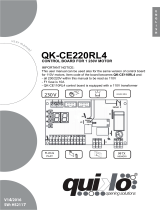 quiko QK-CE220RL4 Manuale utente
quiko QK-CE220RL4 Manuale utente
-
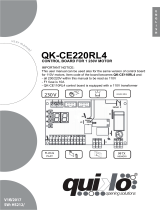 quiko QK-CE220RL4 Manuale utente
quiko QK-CE220RL4 Manuale utente
-
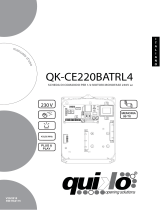 quiko QK-CE220BATRL4 Manuale utente
quiko QK-CE220BATRL4 Manuale utente
-
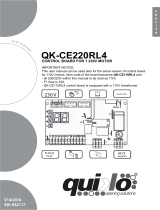 quiko QK-CE220RL4 Manuale utente
quiko QK-CE220RL4 Manuale utente
-
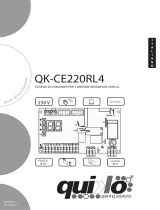 quiko QK-CE220RL4 Manuale utente
quiko QK-CE220RL4 Manuale utente
-
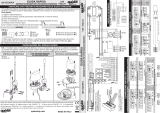 quiko QK-CE220RL4 Guida Rapida
quiko QK-CE220RL4 Guida Rapida
-
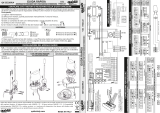 quiko QK-CE220RL4 Guida Rapida
quiko QK-CE220RL4 Guida Rapida
-
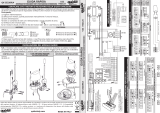 quiko QK-CE220RL4 Guida Rapida
quiko QK-CE220RL4 Guida Rapida
-
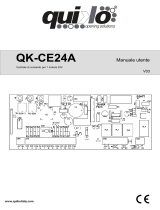 quiko QK-CE24A Manuale utente
quiko QK-CE24A Manuale utente
-
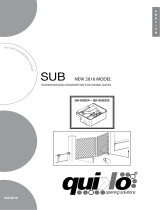 quiko Sub Manuale utente
quiko Sub Manuale utente
Altri documenti
-
SEA Gate 1 DG R2BF Manuale del proprietario
-
SEA Gate 1 DG R1 Manuale del proprietario
-
SEA Gate 2 DG R1 Manuale del proprietario
-
SEA Unigate FV Manuale utente
-
SEA USER 1 Manuale del proprietario
-
SEA Gate 1 DG R1 Manuale del proprietario
-
BFT Thalia L Manuale utente
-
SEA Gate 2 DG R1B Manuale del proprietario
-
SEA SWING 2 Manuale del proprietario









































